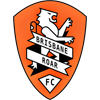In the world of prop trading, building a winning trading plan is crucial for success. A trading plan serves as a roadmap, providing the guidance and structure needed to navigate the ever-changing market conditions.
By understanding the basics of a trading plan and incorporating key components, prop traders can develop a robust strategy to achieve their financial goals.
Understanding the Basics of a Trading Plan
Defining a Trading Plan
A trading plan is a comprehensive document that outlines a trader’s approach to the market, taking into account strategies that might be employed at leading prop firms for funded accounts and the nuances of prop trading. It covers various aspects, such as trading goals, risk management strategies, selection of trading instruments, and trading schedule. In addition to these key components, a trading plan may also include sections on market analysis techniques, entry and exit criteria, and performance evaluation metrics. By incorporating all these elements, traders can create a structured framework to guide their decision-making process in the dynamic world of trading.
Furthermore, a trading plan serves as a reflection of a trader’s mindset and approach towards trading. It encapsulates their beliefs, attitudes, and strategies, providing a roadmap for navigating the complexities of the financial markets. Through continuous review and refinement, traders can adapt their trading plan to changing market conditions and personal growth, ultimately enhancing their overall trading performance.
Importance of a Trading Plan for Prop Firms
Proprietary trading firms (prop firms) employ traders to trade with the company’s capital. Having a trading plan is essential for prop traders as it helps them align their trading activities with the firm’s objectives. A well-crafted plan not only increases the chances of profitability but also ensures consistency and discipline in trading. For prop firms, trading plans play a crucial role in risk management, performance evaluation, and regulatory compliance.
Moreover, trading plans in prop firms often undergo rigorous scrutiny and approval processes to ensure alignment with the firm’s overall trading strategies and risk tolerance levels. Prop traders are required to adhere to the guidelines set forth in their trading plans, fostering a culture of accountability and professionalism within the firm. By integrating individual trading plans into the broader framework of the prop firm’s risk management protocols, traders can contribute to the collective success of the organization while pursuing their own trading goals.
Read Also: CHAN 2025Q: Home Eagles Step Up Preparation For Ghana Clash
Key Components of a Winning Trading Plan
Setting Trading Goals
Setting clear and achievable trading goals is the first step towards building a winning trading plan. Traders need to define their financial targets, risk tolerance, and timeframes for achieving those goals. This helps in establishing a clear direction and motivates traders to stay focused on their objectives.
Moreover, setting trading goals provides traders with a roadmap for their trading journey. By having specific targets in place, traders can measure their progress, identify areas for improvement, and make informed decisions based on their goals. Whether the goal is to achieve a certain percentage of return on investment or to increase the size of their trading account, having a clear objective can enhance discipline and consistency in trading activities.
Risk Management Strategies
Effective risk management is crucial in trading. Traders must develop strategies to protect their capital and limit potential losses. This includes setting stop-loss levels, defining position sizes based on risk-reward ratios, and employing risk mitigation techniques such as diversification.
In addition to the aforementioned risk management strategies, traders can also utilize tools like trailing stops, which adjust the stop-loss level as the trade moves in their favor, locking in profits while minimizing potential losses. Furthermore, incorporating risk management principles like proper asset allocation and using leverage judiciously can help traders navigate volatile market conditions with more confidence and control.
Selection of Trading Instruments
Choosing the right trading instruments is another critical component of a trading plan. Traders need to assess different markets and identify the instruments that align with their trading strategies. This can include stocks, options, futures, or forex. Each instrument carries its own set of risks and benefits, so thorough research is essential.
Furthermore, understanding the correlation between different trading instruments can provide traders with insights into diversification opportunities and potential hedging strategies. For instance, pairing a high-risk, high-reward instrument with a more stable asset can help balance the overall risk exposure in a trading portfolio. By carefully selecting a mix of trading instruments, traders can create a well-rounded and resilient trading plan that is better equipped to weather market fluctuations and achieve long-term success.
Developing a Robust Trading Strategy
Fundamental Analysis vs Technical Analysis
When developing a robust trading strategy, traders need to consider whether to rely on fundamental analysis or technical analysis. Fundamental analysis involves evaluating economic indicators, company news, and financial statements to identify potential trading opportunities. On the other hand, technical analysis involves analyzing price charts and indicators to forecast future price movements.
Creating a Trading Schedule
A trading plan should include a well-defined trading schedule. Traders need to determine the best times to trade based on market volatility and liquidity. This helps in avoiding unnecessary exposure and maximizing trading opportunities during the most opportune periods.
Implementing Stop Loss and Take Profit Levels
Setting stop-loss and take-profit levels is crucial for managing trades effectively. Stop-loss orders help limit potential losses by automatically exiting a trade if the price moves against the trader’s position. Take-profit orders, on the other hand, lock in profits by automatically closing a trade when a predetermined target is reached.
Evaluating and Improving Your Trading Plan
Regular Review of Trading Performance
A winning trading plan needs to be regularly reviewed and evaluated. Traders should keep track of their trading performance, including win-loss ratios, average trade duration, and overall profitability. By analyzing this data, traders can identify strengths and weaknesses in their strategy and make necessary adjustments.
Adapting to Market Changes
Markets are dynamic and constantly evolving. Traders need to adapt their trading plans to accommodate changing market conditions. This may involve updating risk parameters, adjusting trading strategies, or exploring new trading opportunities. Flexibility is key to surviving and thriving in the world of prop trading.
Continuous Learning and Improvement
Successful prop traders understand the importance of continuous learning and improvement. They stay up-to-date with market trends, explore new trading techniques, and seek feedback from experienced traders. This ongoing process of learning helps traders refine their strategies, enhance their skills, and stay ahead of the curve.
In conclusion, building a winning trading plan is crucial for prop traders looking to achieve success. By understanding the basics of a trading plan and incorporating key components such as setting clear goals, implementing risk management strategies, and developing a robust trading strategy, prop traders can navigate the markets with confidence. Regular evaluation and adaptation, coupled with continuous learning, are essential for prop traders to stay competitive and achieve long-term profitability.
























































































